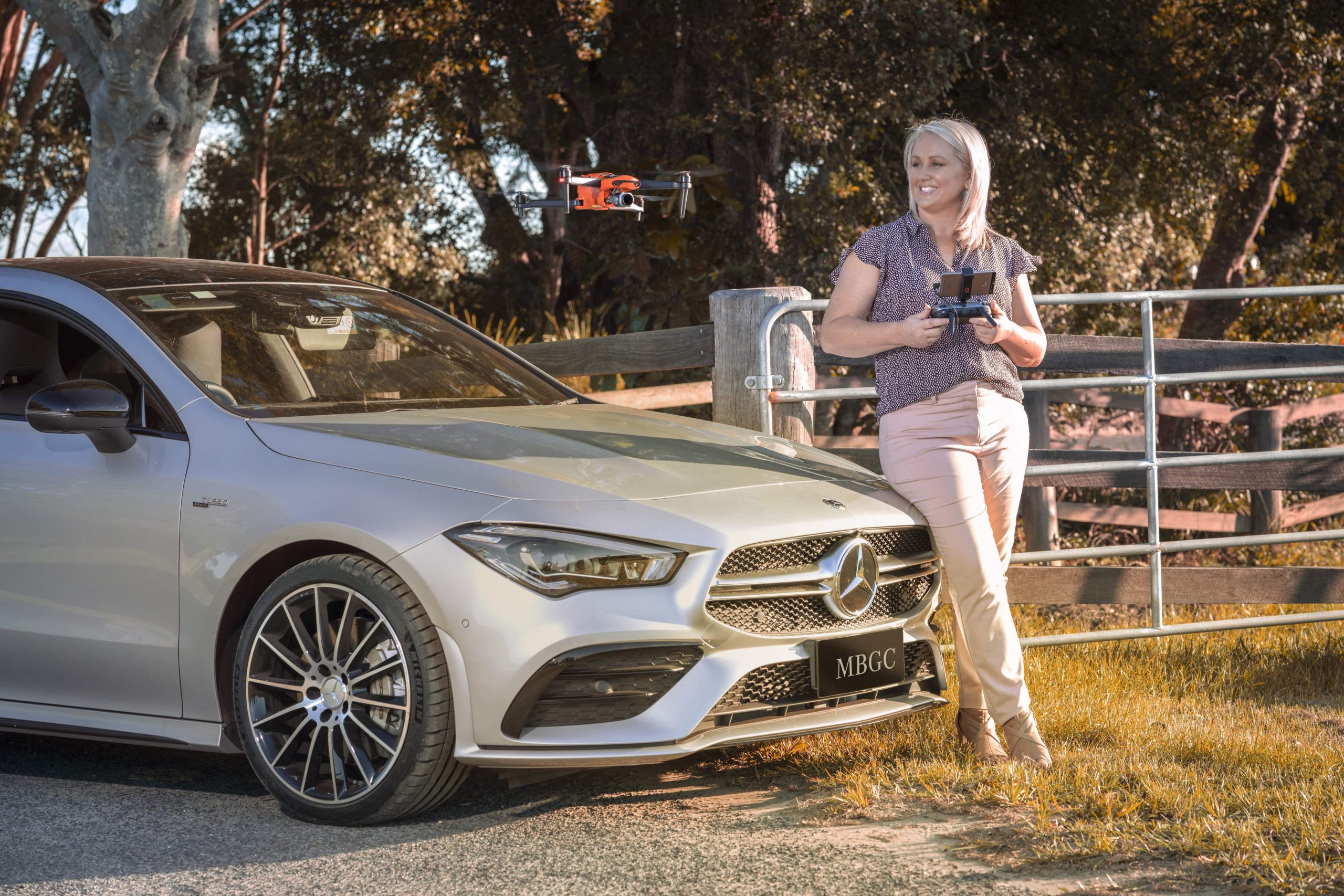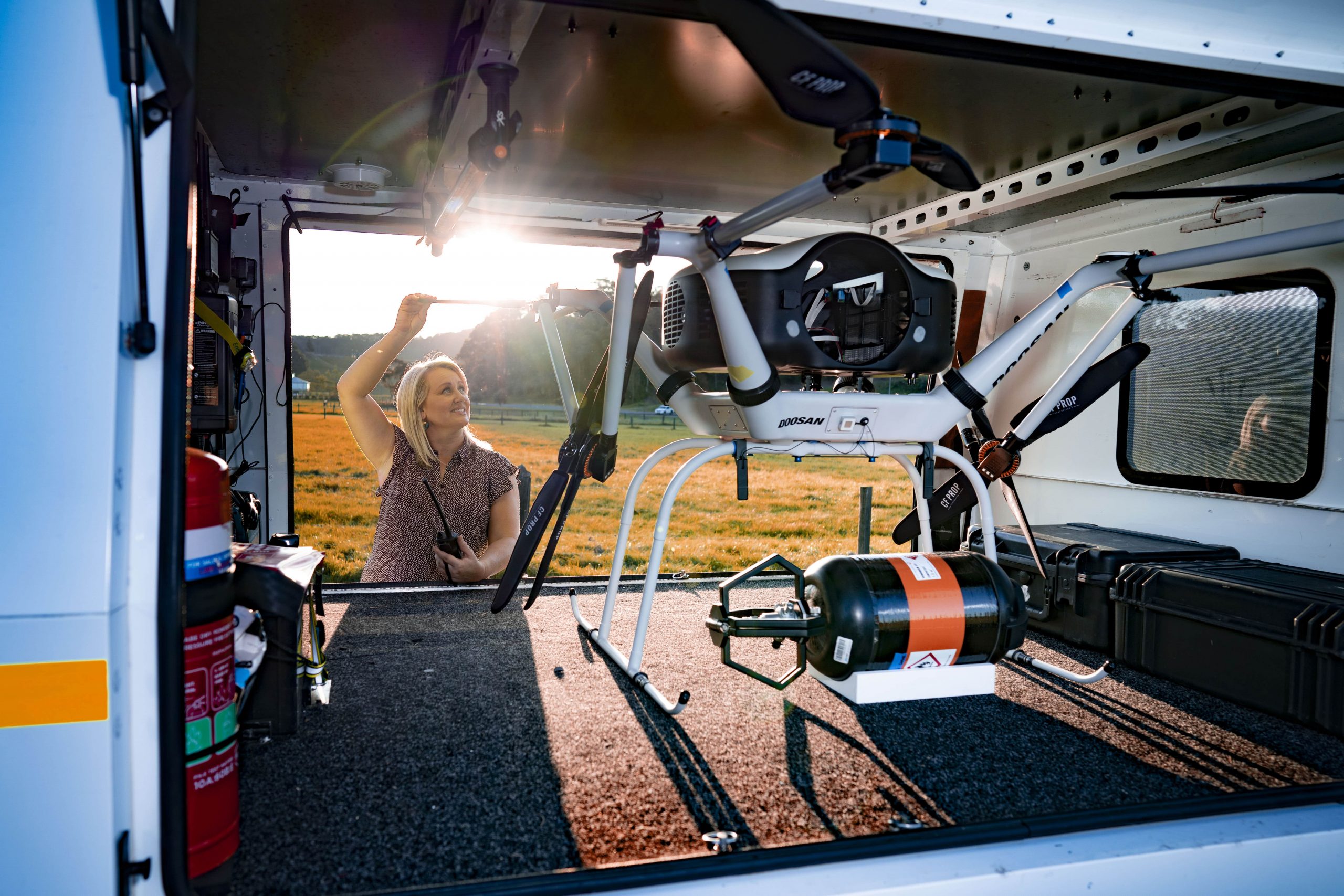Against the picturesque backdrop of Tumbulgum, trailblazing drone expert Jackie discusses laying the foundations for a successful drone program.
Cruising up and down the stretch of road that borders the Tweed River, Jackie Dujmovic is relaxed behind the wheel of the Mercedes-Benz AMG CLA35.
Flying 12 metres overhead, a drone is capturing all the best angles of the aesthetically appealing sedan that effortlessly handles the road.
As CEO of Australia’s leading drone consultancy firm, Hover UAV, Jackie is at the forefront of some impressive technology, namely, drone tech.
Jackie is one of the country’s drone experts, working with Australia’s Google Wing project, inventing life-saving UAV shark alarm technology, taking out numerous awards and serving on multiple industry boards.
Hover UAV helps solve problems and, in particular, formulate drone solutions to assist businesses in moving their programs forward.
“A lot of businesses recognise they are going to need drones, but they aren’t sure how to implement a program or what procedures and internal processes they’ll need,” says Jackie.
“For us, this could mean providing regulatory assistance when a new drone enters the market which they need, or it could be an end user who wants to advance their tech program.
“We also help businesses write complex operational approvals, such as beyond visual line of sight and help ensure they are compliant.”
Hover UAV doesn’t just help businesses formulate their drone programs, they are also trailblazers whose strategies and procedural documents will help shape the future of the drone industry.
“We sit in on a lot of working groups and policy and strategy sessions with government to work out what the future of autonomous drones and drone delivery is going to look like,” she says.
Over the next five years, Jackie anticipates drone delivery will see significant growth.
“We’ve seen the public start to accept and embrace the concept of drone delivery, so there are bound to be more advances in this area,” says Jackie.
“Hover UAV facilitate the Drones for Life program, a collaboration between iMOVE Australia, Charles Darwin University and NT Health to deliver medical items to remote Indigenous communities in the Northern Territory.
“We are going to start seeing drones delivering to every household and we are going to have so many in the sky, so companies need to work now to establish foundations and avoid being left behind.”
One of Jackie’s favourite projects is Drone in a Box, a program she considers the pathway to autonomous drones.
“We are one of the first businesses in the world, outside of defence, who have been approved for this program,” says Jackie.
“It means a drone or drones can be placed in weather-proof boxes at any site across Australia and operated from a remote command centre.
“Someone can be flying remotely and flying multiple drones at once.
“While people are more familiar with the thumbs on sticks type of navigation and keeping the drone in line of sight, the way we are moving forward will eventually mean we’ll be bringing AI into the loop.”
Compared to the global drone industry, Jackie sees Australia as ahead of the curve, something that can be attributed to our vast landscape.
“We are still pushing ahead as early adapters, but I think we’ve still got a long way to go,” she says.
“Australia has always been at the forefront of the industry and we are lucky to have large, open areas with low ground risk which have played to our advantage.
“It’s been the ideal place to conduct trials and push the boundaries.”
In order to determine if a drone program is an effective offering and whether it can be implemented into a businesses’ workflow, Hover UAV starts works by conducting trials.
While most trials prove whether drones enhance a company’s operational model, there are often unexpected side benefits that are discovered.
“We experience this quite often in the mining and utility industries where, after the trials, clients will come back and say how beneficial the drone program has been to their workplace, health and safety,” says Jackie.
“If we’re conducting a trial that sees a drone flying three hours to a location to collect data or check infrastructure, we’re effectively limiting the risks to someone who has to travel to that site.
“You’ve now got a drone monitoring something that previously required someone to drive along a rural road where wildlife and terrain were a safety issue.
“So, the drone has not only enhanced an area of the business it was intended for, but also improved another aspect.”
Looking to the future of the drone industry, it’s how the air space is going to work that Jackie finds the most interesting.
“We take for granted the infrastructure – highways, roads, traffic lights – around us that helps us navigate from day to day,” she says.
“It’s interesting to think about the rules that go into the traffic management system and how that will be applied into air space for drones as they become more prevalent in our skies.
“We are going to see this come into play within the next few years and when it does, it means airspace will be blocked out to enable people to push further barriers, fly further and open up drone delivery to a whole new level.”









